UNESCO World Heritage Sites in India: A Complete Guide to Cultural, Natural, and Mixed Heritage (2025)
Introduction: The Importance of UNESCO World Heritage Sites and India’s Diversity
India, a land of timeless civilizations, stands as a vibrant tapestry where the threads of history, nature, spirituality, and art are seamlessly woven together. Nowhere is this tapestry more vivid than in its UNESCO World Heritage Sites. These special places ranging from ancient rock-cut caves to architectural marvels, sacred temples to vast forests hold an outstanding universal value not only for India but for all humanity. The recognition conferred by UNESCO goes far beyond prestige: it represents a commitment to preserving the world’s irreplaceable heritage against encroaching urbanization, climate change, and the relentless passage of time.
UNESCO World Heritage Sites in India celebrate the country’s immense cultural and natural diversity. From the snow-clad peaks of the Himalayas to lush tropical forests, from Mughal mausoleums to grand Hindu temples, each site tells a unique story. These sites are not mere relics; they are living legacies serving as a link between the past, present, and future generations, fostering identity and pride while fueling economic growth through tourism.
UNESCO World Heritage in India: Overview and Evolution
Brief History and India’s Engagement
The journey of UNESCO World Heritage in India began with the country officially ratifying the World Heritage Convention on 14 November 1977. This pivotal commitment allowed Indian landmarks to be considered for inscription, and recognized India’s shared responsibility in conserving both its own heritage and that of humanity The first Indian sites inscribed in 1983 were the Ajanta Caves, Ellora Caves, Agra Fort, and the Taj Mahal a distinguished group that signaled the start of a dynamic process to showcase and protect India’s treasures.
As of August 2025, India has 44 UNESCO World Heritage Sites, distributed as follows:
- 36 Cultural Sites
- 7 Natural Sites
- 1 Mixed Site
India holds the sixth highest total globally, a remarkable achievement underscoring its deep civilizational roots and varied geography
The Role of UNESCO Designation
UNESCO inscribes sites on the World Heritage List based on ten rigorous criteria, intended to ensure that only places of outstanding universal value be it for their culture, history, architecture, biodiversity, or natural beauty are recognized and protected. The UNESCO designation provides:
- International awareness and prestige
- Access to global funding and conservation expertise
- Boosted tourism and local economies
- Mandates for regular reporting, conservation, and education
However, with recognition comes responsibility. States must integrate heritage protection into national policy, prevent harm, and engage communities in management
Categories of World Heritage Sites in India
Cultural Heritage Sites
“Cultural heritage” refers to monuments, architectural works, inscriptions, groups of buildings, and archaeological sites with historic, artistic, or scientific value. India’s cultural heritage sites stand out for:
- Their association with major world religions (Hinduism, Buddhism, Jainism, Islam)
- Epoch-defining architecture (Indus Valley sites, Mughal fortresses, medieval temples)
- Living traditions and intercultural exchanges
Notable examples include the Taj Mahal, Ajanta and Ellora Caves, Sun Temple at Konark, Khajuraho Monuments, and the Great Living Chola Temples
Natural Heritage Sites
These sites are recognized for natural features, geological formations, habitats for threatened species, and landscapes of outstanding beauty or ecological value. They conserve critical biodiversity and support scientific research. Examples include Kaziranga National Park (home to the world’s largest population of one-horned rhinos), the Western Ghats, and the Sundarbans
Mixed Heritage Site
A “mixed” site must have both cultural and natural significance. India’s sole mixed site, the Khangchendzonga National Park in Sikkim, exemplifies this rare blend, with sacred peaks revered by local communities and a biodiversity hotspot recognized worldwide.
The Selection Criteria for World Heritage Sites
UNESCO’s ten selection criteria are divided into cultural (i–vi) and natural (vii–x):
- Cultural criteria assess aspects like creative genius, cultural traditions, architecture, testimony to history, or associations with events/ideas.
- Natural criteria focus on superlative natural phenomena, Earth’s evolutionary history, ecological processes, and biodiversity.
A site must meet at least one criterion to be inscribed. In India, many sites meet multiple criteria, highlighting their multi-layered value as both cultural artifacts and ecological treasures
Detailed List of UNESCO World Heritage Sites in India (2025)
Below is a summary table of India’s UNESCO World Heritage Sites as of 2025, categorized for clarity
| Name | Type | State/Region | Year | Key Features/Significance |
|---|---|---|---|---|
| Ajanta Caves | Cultural | Maharashtra | 1983 | Masterpieces of Buddhist art (2nd BCE – 6th CE) |
| Ellora Caves | Cultural | Maharashtra | 1983 | 34 caves: Buddhist, Hindu, Jain harmony; Kailash Temple |
| Agra Fort | Cultural | Uttar Pradesh | 1983 | Mughal stronghold; Indo-Islamic architecture |
| Taj Mahal | Cultural | Uttar Pradesh | 1983 | White marble mausoleum; symbol of love; Mughal architecture |
| Sun Temple, Konark | Cultural | Odisha | 1984 | 13th-century chariot-shaped temple; Kalinga architecture |
| Group of Monuments at Mahabalipuram | Cultural | Tamil Nadu | 1984 | Pallava dynasty rock-cut temples/reliefs |
| Khajuraho Group of Monuments | Cultural | Madhya Pradesh | 1986 | Nagara-style temples; erotic sculpture |
| Fatehpur Sikri | Cultural | Uttar Pradesh | 1986 | Mughal capital with distinctive urban planning |
| Group of Monuments at Hampi | Cultural | Karnataka | 1986 | Vijayanagara Empire’s ruins; blend of Dravidian and Islamic styles |
| Great Living Chola Temples | Cultural | Tamil Nadu | 1987 | Dravidian temples (11th–12th c.); Chola dynasty |
| Elephanta Caves | Cultural | Maharashtra | 1987 | Shaivite cave temples with Trimurti sculpture |
| Churches and Convents of Goa | Cultural | Goa | 1986 | Baroque, Gothic Portuguese colonial churches |
| Group of Monuments at Pattadakal | Cultural | Karnataka | 1987 | Chalukya temples blending north/south Indian styles |
| Buddhist Monuments at Sanchi | Cultural | Madhya Pradesh | 1989 | Stupas and monastic complexes (3rd c. BCE) |
| Humayun’s Tomb | Cultural | Delhi | 1993 | First garden-tomb; precursor to Taj Mahal |
| Qutb Minar and its Monuments | Cultural | Delhi | 1993 | Indo-Islamic tower and mosque |
| Mountain Railways of India | Cultural | Tamil Nadu/etc. | 1999–2008 | Darjeeling, Nilgiri, Kalka–Shimla: engineering marvels |
| Mahabodhi Temple Complex at Bodh Gaya | Cultural | Bihar | 2002 | Site of Buddha’s enlightenment |
| Rock Shelters of Bhimbetka | Cultural | Madhya Pradesh | 2003 | Prehistoric cave paintings |
| Chhatrapati Shivaji Terminus | Cultural | Maharashtra | 2004 | Victorian Gothic railway station—Mumbai |
| Champaner-Pavagadh Archaeological Park | Cultural | Gujarat | 2004 | Multi-period Hindu, Jain, Islamic complex |
| Red Fort Complex | Cultural | Delhi | 2007 | Mughal fort and palace-complex |
| The Jantar Mantar, Jaipur | Cultural | Rajasthan | 2010 | 18th-century astronomical observatory |
| Hill Forts of Rajasthan | Cultural | Rajasthan | 2013 | Six grand Rajput forts |
| Rani-ki-Vav (Queen’s Stepwell) | Cultural | Gujarat | 2014 | 11th-century stepwell with intricate carvings |
| Archaeological Site of Nalanda Mahavihara | Cultural | Bihar | 2016 | Ancient Buddhist monastic university (5th–13th c.) |
| Historic City of Ahmedabad | Cultural | Gujarat | 2017 | India’s first World Heritage City |
| Victorian Gothic and Art Deco Ensembles | Cultural | Maharashtra | 2018 | Mumbai’s historic urban architecture |
| Jaipur City | Cultural | Rajasthan | 2019 | Grid-planned 18th-century capital |
| Dholavira: a Harappan City | Cultural | Gujarat | 2021 | Indus Valley Civilization metropolis |
| Ramappa Temple | Cultural | Telangana | 2021 | Kakatiya dynasty temple |
| Santiniketan | Cultural | West Bengal | 2023 | Rabindranath Tagore’s educational vision |
| Sacred Ensembles of the Hoysalas | Cultural | Karnataka | 2023 | Temples with mixed Dravidian/north Indian styles |
| Moidams – Mound-burial system (Ahom) | Cultural | Assam | 2024 | Ahom royal burial mounds |
| Maratha Military Landscapes | Cultural | Maharashtra/Tamil Nadu | 2025 | 12 forts; strategic military design |
| Kaziranga National Park | Natural | Assam | 1985 | One-horned rhinoceros; tiger habitat |
| Keoladeo National Park | Natural | Rajasthan | 1985 | Man-made wetland, migratory bird haven |
| Manas Wildlife Sanctuary | Natural | Assam | 1985 | Biodiversity hotspot, endangered species |
| Sundarbans National Park | Natural | West Bengal | 1987 | World’s largest mangrove forest, Bengal tiger |
| Nanda Devi & Valley of Flowers National Parks | Natural | Uttarakhand | 1988,2005 | Alpine meadow, Himalayan flora, snow leopard |
| Western Ghats | Natural | Multi-state | 2012 | Biodiversity hotspot, montane forests |
| Great Himalayan National Park | Natural | Himachal Pradesh | 2014 | High-altitude wildlife, meadows, rivers |
| Khangchendzonga National Park | Mixed | Sikkim | 2016 | Sacred mountain, Lepcha/Buddhist heritage, biodiversity |
Note: This is a representative selection—please refer to UNESCO/Ministry tables for the latest details.
Recent Additions and the UNESCO 2025 Updates
India continues to augment its list, reflecting persistent efforts in both preservation and global engagement. Since 2023, notable inclusions have been:
- Santiniketan (2023): The ashram and educational center founded by Rabindranath Tagore in West Bengal
- Sacred Ensembles of the Hoysalas (2023): Group of Hoysala temples in Karnataka
- Moidams – Mound-Burial system of the Ahom Dynasty (2024): Royal burial mounds in Assam
- Maratha Military Landscapes of India (2025): Twelve strategic forts built by the Maratha Empire, demonstrating military ingenuity and architecture
New Additions in 2025: Detailed Highlights
The most recent round of UNESCO World Heritage nominations and inscriptions represents India’s growing heritage consciousness. The following sites were added to India’s UNESCO Tentative List in 2025, marking them as top contenders for future inscription.
- Kanger Valley National Park (Chhattisgarh)
- Type: Natural (Tentative List)
- Significance: A biodiversity-rich forested region, featuring rare limestone caves, endemic flora, bastar hill myna, and waterfalls. It offers a snapshot of the region’s “ecological mosaic” and is famed for undisturbed humid deciduous woods, stalactite caves, and waterfalls like Tirathgarh.
- Mudumal Megalithic Menhirs (Telangana)
- Type: Cultural (Tentative List)
- Significance: Over 3,500 years old, this site has nearly 80 towering menhirs aligned with celestial phenomena, as well as 3,000 alignment stones linked to funerary rites of ancient communities. Local beliefs and traditions remain closely tied to these stones, embracing both archaeological and spiritual value.
- Ashokan Edict Sites along the Mauryan Routes (Multiple States)
- Type: Cultural (Tentative List)
- Significance: Serial nomination of 34 sites hosting stone, rock, cave, and pillar edicts of Emperor Ashoka. These inscriptions, some over 2,200 years old, provide insights into governance, Buddhist philosophy, and ancient communication routes.
- Chausath Yogini Temples (Multiple States)
- Type: Cultural (Tentative List)
- Significance: Thirteen temples across India, mostly circular and hilltop, dedicated to groups of 64 Yoginis (female deities) related to tantric traditions. Their unique architectural features and ritual importance reflect India’s religious diversity and esoteric heritage.
- Gupta Temples of North India
- Type: Cultural (Tentative List)
- Significance: Exemplars of early stone Hindu temple architecture from the Gupta dynasty (4th–6th centuries CE), marking a pivotal period in Indian art and religious expression.
- Palace-Fortresses of the Bundelas (Madhya Pradesh & Uttar Pradesh)
- Type: Cultural (Tentative List)
- Significance: Six forts, including Garhkundar, Jhansi, and Datia, showing Rajput-Mughal fusion, martial architecture, and the Bundela Rajput dynasty’s cultural contributions.
These inclusions boost India’s tentative list to 62 sites, laying the groundwork for future UNESCO nominations and recognition.
Famous Examples: Cultural and Natural Icons
Taj Mahal (Uttar Pradesh)
The Taj Mahal needs no introduction: built by Shah Jahan in memory of Mumtaz Mahal (1631–1648), this white marble mausoleum exemplifies Mughal architectural mastery and eternal love. Adorned with precious inlays, arabesque script, and reflecting pools, it is crowned as one of the New Seven Wonders of the World. It attracts over 6 million visitors annually, generating the highest revenue of any ASI monument, and remains India’s most enduring symbol internationally
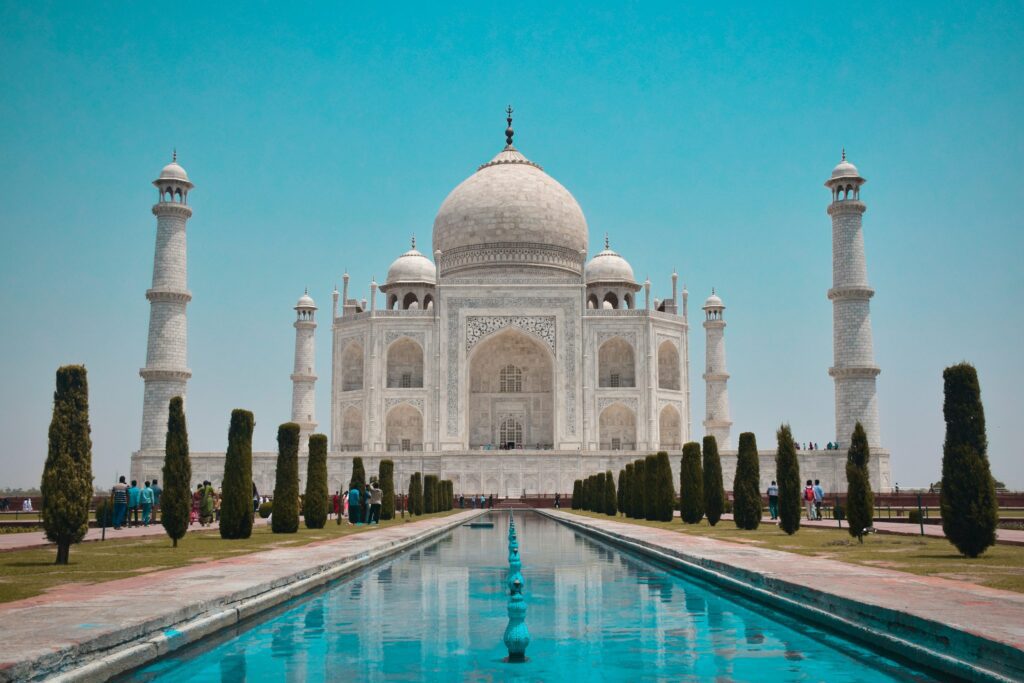
Ajanta Caves (Maharashtra)
These thirty rock-cut Buddhist caves, carved from the 2nd century BCE through the 5th–6th centuries CE, showcase some of the world’s finest surviving ancient Buddhist art—featuring frescoes depicting the Jataka tales, grand chaityas, and monastic viharas. Ajanta’s art had an enduring impact on the Buddhist world from India to Java and Tibet. The caves are masterpieces of painting, sculpting, and spiritual narrative
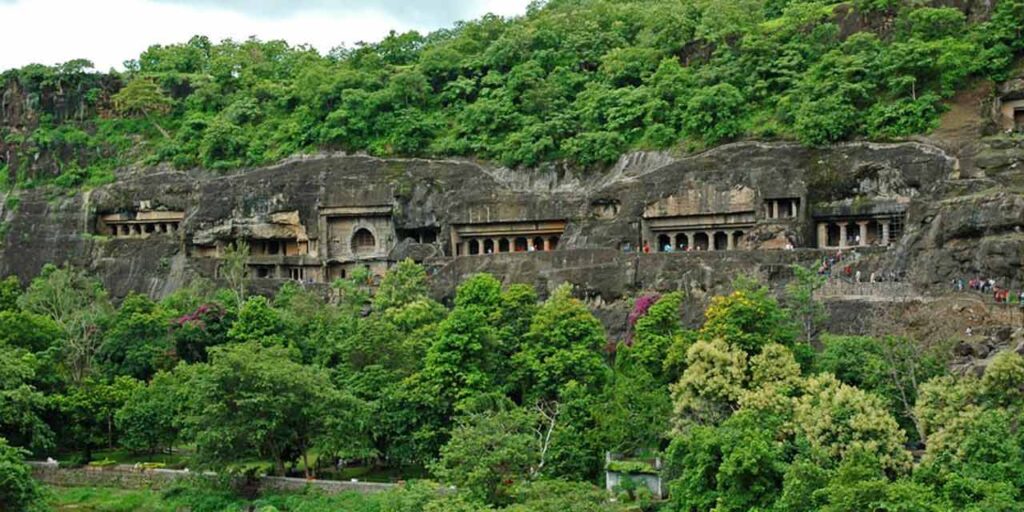
Ellora Caves (Maharashtra)
Ellora’s 34 caves exemplify the harmonious co-existence of Buddhist, Hindu, and Jain faiths (600–1000 CE). The site’s highlight, the Kailasa Temple, is the world’s largest monolithic rock excavation—an architectural and engineering marvel representing Mt. Kailash, Shiva’s abode. Ellora is a testament to religious tolerance and artistic brilliance
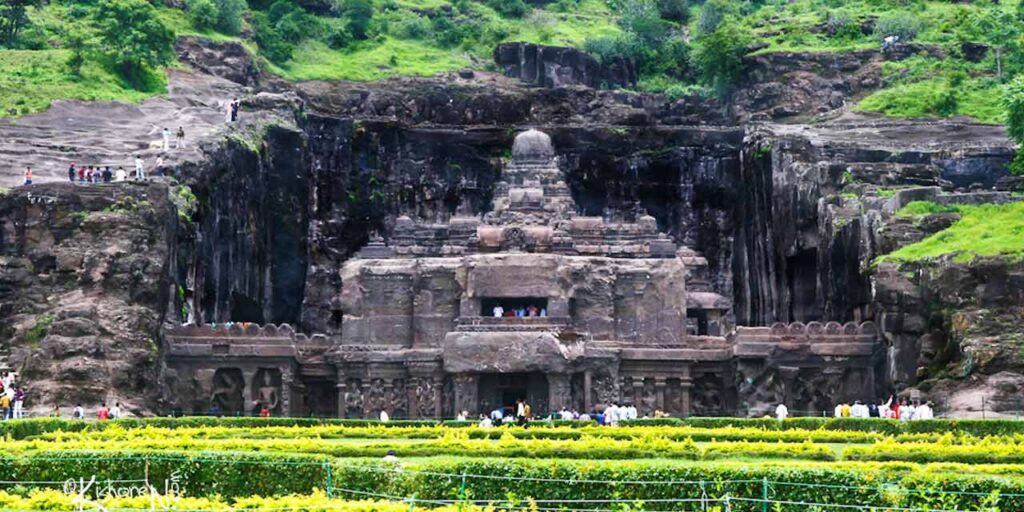
Sun Temple, Konark (Odisha)
Built in the 13th century by King Narasimha Deva I, this chariot-shaped temple is designed as Surya’s celestial vehicle, pulled by stone horses and adorned with 24 ornate wheels. The temple’s narrative stone panels depict gods, dancers, musicians, and everyday life, blending architecture, astronomy, and spiritual symbolism. The Sun Temple is a masterpiece of Kalinga architecture and a symbol of Odisha
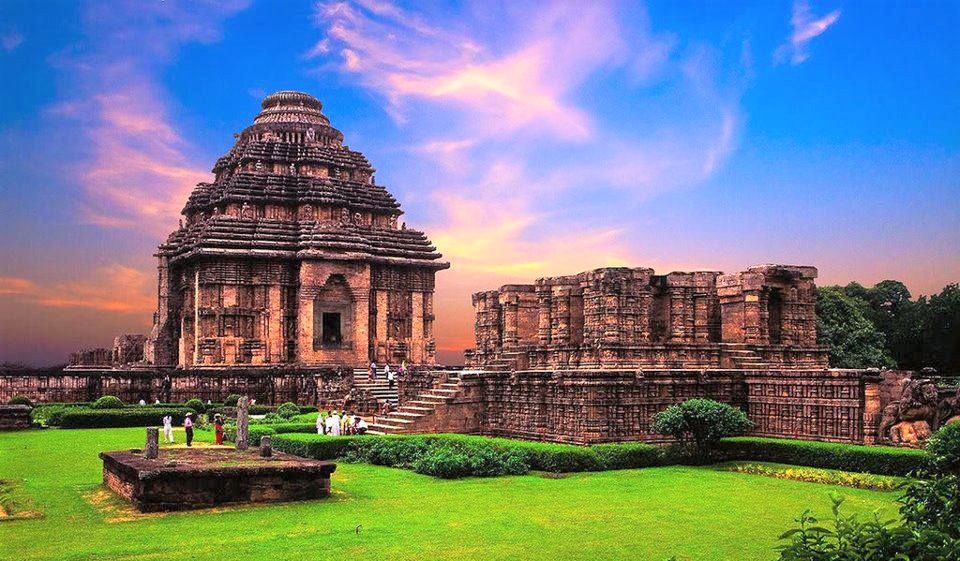
Kaziranga National Park (Assam)
A natural World Heritage Site, Kaziranga is renowned for harboring more than two-thirds of the world’s one-horned rhinoceroses, alongside robust populations of tigers, elephants, and migratory birds. Its riverine floodplain ecosystem changes with the Brahmaputra’s moods, and the park stands as a success in wildlife conservation and community-based eco-tourism
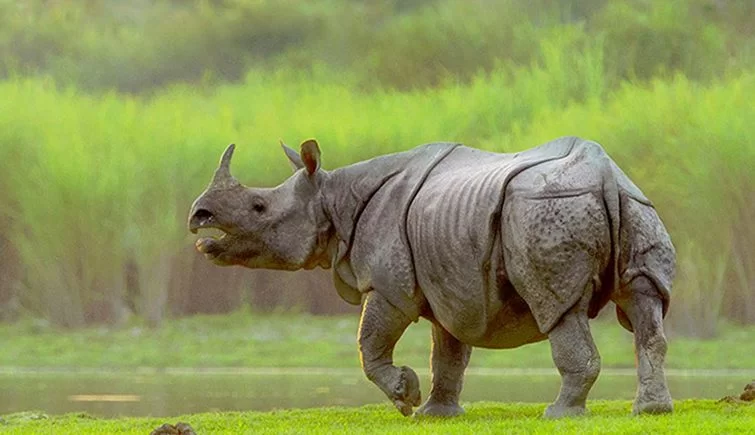
The Mixed Heritage Site: Khangchendzonga National Park (Sikkim)
Khangchendzonga National Park stands as India’s only mixed World Heritage Site, recognized for both natural grandeur and deep cultural importance. Encompassing 25% of Sikkim, it includes the world’s third-highest peak, glacial lakes, forests, and endemic biodiversity. Culturally, the mountain is revered as “Mayel Lyang” by Lepchas and a “Beyul” (hidden land) in Buddhism. Ritual sites, myths, and sacred texts intertwine with the region’s conservation. The park’s management blends traditional and modern strategies, striving to balance tourism, faith, scientific study, and local livelihoods
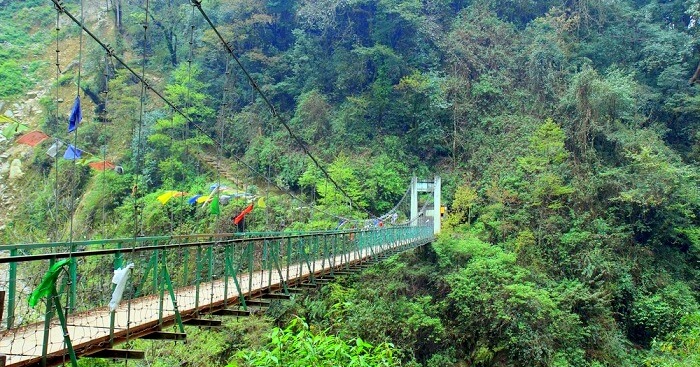
Tourism and the Economic Importance of India UNESCO Sites
Driving Tourism and Local Economies
UNESCO recognition drives India’s position as one of the world’s leading cultural tourism destinations. In 2023, India recorded 9.5 million foreign tourist arrivals and domestic tourist visits exceeded 2.5 billion, with heritage sites like the Taj Mahal, Jaipur, and Kaziranga topping both foreign and Indian visitor statistics4.
Tourism generated over US$28 billion in foreign exchange earnings in 2023, with World Heritage Sites playing a central role. Hospitality, local crafts, transport, and guiding services thrive around these sites, sustaining thousands of jobs and indirect livelihoods. Notably:
- Agra’s economy is sustained by domestic and international footfall at the Taj Mahal, Agra Fort, and Fatehpur Sikri.
- Ajanta and Ellora support Maharashtra’s hinterland tourism and infrastructure.
- Kaziranga and the Western Ghats foster eco-tourism and sustainable wildlife experiences, engaging indigenous and rural communities.
Cultural Identity and Global Branding
Heritage conservation instills national pride, diplomatic soft power, and a unique brand image for ‘Incredible India’. Historic sites also host festivals and events, such as:
- The Konark Dance Festival, celebrating classical Indian arts
- Jaipur Literature Festival, held in a UNESCO-inscribed royal city
Challenges in Heritage Tourism
While tourism yields economic benefits and global awareness, overcrowding, environmental pressure, and cultural commodification pose threats especially at fragile sites. For instance, the Ajanta murals are rapidly deteriorating under tourist bio-respiration, and Taj Mahal’s marble faces discoloration from air pollution. Managing tourism numbers, providing eco-friendly infrastructure, and community-based tourism are crucial to sustainable heritage travel.
Preservation, Conservation Challenges, and Measures
Major Challenges
India’s heritage faces a mosaic of threats:
- Urbanization: Encroachment from construction and neglect amid urban sprawl (notable in Delhi, Mumbai, and Agra) endangers historic precincts and buffer zones.
- Pollution & Climate Change: Air pollutants, acid rain (e.g., Mathura refinery by Taj Mahal), rising sea levels (in Sundarbans and Konark), temperature/humidity shifts, and increased storms stress fragile monuments and ecosystems.
- Natural Disasters: Earthquakes, floods, and cyclones threaten both built and natural sites.
- Over-Tourism: Physical wear, vandalism, and stress on site infrastructure.
- Neglect and Underfunding: Inadequate conservation budgets, lack of skilled staff, and poor awareness, especially in rural heritage zones.
Preservation and Conservation Efforts
The Archaeological Survey of India (ASI), Ministry of Culture, INTACH, UNESCO, and international partnerships collaborate on safeguarding heritage. Key approaches include:
- Legal Protection: Ancient Monuments and Archaeological Sites and Remains Act (1958/2010), city heritage by-laws, and buffer zones
- Preventive and Structural Conservation: Periodic repairs, chemical treatment, and restoration (e.g. mud pack “facials” for Taj Mahal, structural strengthening of Konark)
- Environmental Management: Banning polluting vehicles (e.g. in Agra, Ajanta), eco-friendly buses, managing deforestation
- Community Engagement: Training locals as guides, stakeholder consultations, benefit sharing, participatory restoration
- Technology and Documentation: Surveys, GIS mapping, 3D scanning, and international project audits
- Disaster Resilience Planning: Creating emergency response plans, promoting sustainable city master plans (e.g. Jaipur Master Plan 2025)
India’s 2024 hosting of the World Heritage Committee reinforced its leadership in global conservation strategy.
Case Studies: Site-Specific Challenges and Solutions
- Taj Mahal: The “Taj Trapezium Zone” (TTZ)—an area of over 10,000 km²—imposes strict pollution controls. Technology (air scrubbing, mud packs) and legal action (closing polluting factories, promoting EVs) have mitigated air pollution and marble decay.
- Ajanta and Ellora: Managing visitor caps and eco-friendly transport, funding for mural conservation using reversible chemical treatments, and light-and-sound shows to educate while reducing direct human impact.
- Kaziranga: Combating poaching with community “green squads,” government anti-poaching units, and habitat corridors for migration during floods. Local eco-tourism, and flood refugee highlands constructed for wild animals.
Indian World Heritage Sites: State-by-State Distribution (2025)
A summary table for quick reference:
| State/UT | Number of Sites | Example Sites |
|---|---|---|
| Maharashtra | 7 | Ajanta, Ellora, Elephanta, Shivaji Terminus, Mumbai |
| Uttar Pradesh | 3 | Taj Mahal, Agra Fort, Fatehpur Sikri |
| Tamil Nadu | 5 | Mahabalipuram, Chola Temples, Western Ghats, Nilgiri |
| Rajasthan | 4 | Jantar Mantar, Hill Forts, Jaipur City |
| Karnataka | 4 | Hampi, Pattadakal, Hoysalas temples, Western Ghats |
| Madhya Pradesh | 3 | Sanchi, Bhimbetka, Khajuraho |
| Assam | 3 | Kaziranga, Manas, Moidams |
| West Bengal | 3 | Sundarbans, Santiniketan, Darjeeling Rail |
| Delhi | 3 | Humayun’s Tomb, Qutb Minar, Red Fort |
| Gujarat | 5 | Champaner-Pavagadh, Dholavira, Ahmedabad, Rani-ki-Vav |
| Other states/UTs | Varies | See full lists online |
Conclusion: Preserving India’s Heritage for Future Generations
India’s UNESCO World Heritage Sites are not just a testament to its past, but a living beacon for the future. They tell a story of stunning artistic ingenuity, sacred devotion, ecological resilience, and communal harmony. As India continues to add new sites, it must balance increased tourism and global attention with ever-stronger stewardship, investment in conservation, community engagement, and sustainable development.
Protecting these treasures today ensures that the generations of tomorrow can walk through ancient halls, gaze at timeless murals, and marvel at living forests cherishing India’s heritage as a gift not merely to its people, but to all humanity.
Reference:
en.wikipedia.org


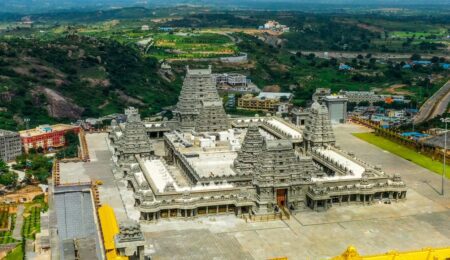
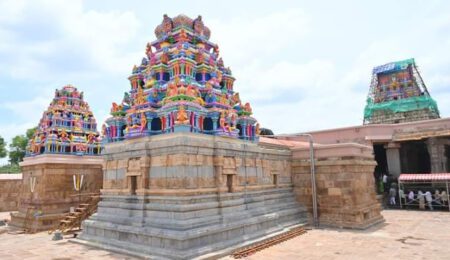
Leave a Comment